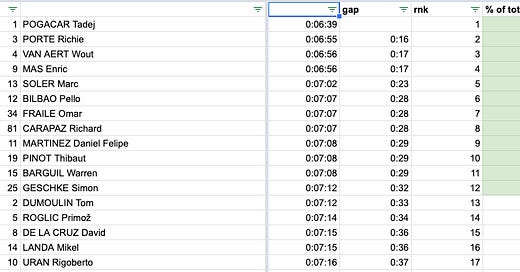Le Tour: Breaking down if Jumbo blew it & Quintana's doping chatter
Digesting Jumbo's collapse, Pogacar's comeback and Quintana's potential doping problem
If you find these weekly newsletters helpful, you can buy me a coffee to keep me fueled while up early watching races.
I am offering a daily newsletter during major races like the Giro d’Italia and Vuelta a Espana, along with two additional newsletters per week during non-GT weeks for paying subscribers. To get this real-time racing and team strategy ana…
Keep reading with a 7-day free trial
Subscribe to Beyond the Peloton to keep reading this post and get 7 days of free access to the full post archives.



